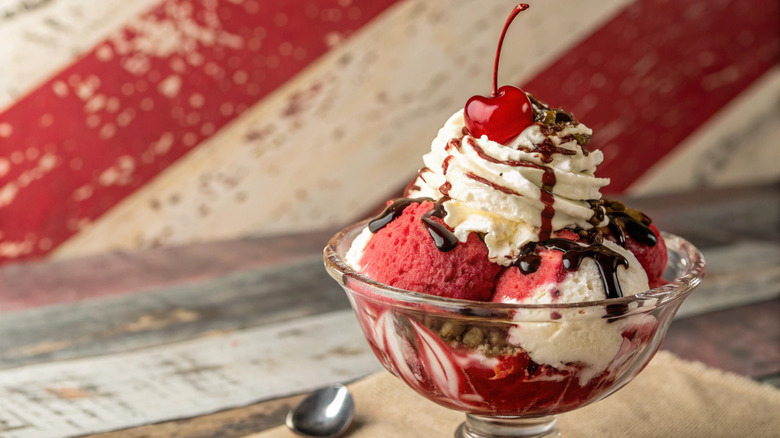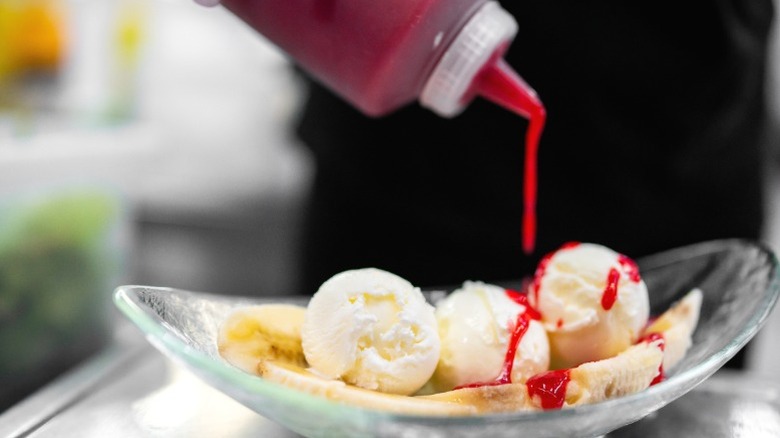The Unexpected Reason Ice Cream Sundae Is Spelled Like That
The world would be a sadder, less whimsical place without the ice cream sundae. Whether you're dousing vanilla ice cream in hot fudge (a favorite of Marilyn Monroe, and one of the best ways to build a sundae), diving into a classic banana split (which you can still get from Dairy Queen, after a fashion), or slurping up a tasty ice cream soda like that one-time pharmacy staple root beer float, these frozen concoctions make a hot summer a little bit more bearable. But why are they called "sundaes" in the first place — and why the heck do they spell it like that? There are a few different theories, many of them advanced by different parts of the country that all claim to have originated the sundae. (This is not uncommon: as anyone who looks into food history knows, origin stories are rarely straightforward.)
We have a pretty good idea of where the practice of making ice cream sundaes originated. They were a way of getting around "blue laws," which forbade selling soda on Sundays (because clearly the law didn't have anything better to do); by replacing soda with some kind of flavored syrup, such as chocolate or cherry, drugstores could go right on selling ice cream to eager customers without running afoul of the Fun Police. Is that where the word "sundae" came from? Quite possibly, although it still doesn't explain why it's spelled with an "e" and not a "y." Was it a way to avoid angering religious folks? Was it a way to be a little clearer about when the dessert was served? Or was it something else entirely?
There are competing ice cream sundae stories
One theory holds that the word "sundae" was invented in Ithaca, New York, with the name deliberately misspelled so as not to offend devout Christians, who might have been displeased with a dish bearing the name of their holy day of rest. (Nobody tell them about Britain's Sunday roasts, then.) Another traces the name back to a soda fountain in a town called Two Rivers, Wisconsin: the sundae was served on the Sabbath in order to get around the aforementioned blue laws, but when one customer suggested it be available every day, they changed the name so that there wouldn't be any confusion. (Eating something called a "Sunday" on a Wednesday? Absurd. Impossible. Foolish.)
Ithaca and Two Rivers have a tongue-in-cheek feud going on concerning the true birthplace of the sundae, but they're not the only two places with a claim to the title. A third theory suggests that the sundae was invented in Plainfield, Illinois, by a pharmacist named Charles Sonntag. Sonntag, for those who don't know, is German for "Sunday", so a simple translation (and a playful misspelling) was all Sonntag needed to make an impression.
Like we said earlier, though, it's hard to trace the story of a dish's origin to a single source, especially in the days before mass communication. It's entirely possible that more than one of these stories is true — but even if they were all made up, we're still going to savor a delicious sundae whenever we get the chance.

